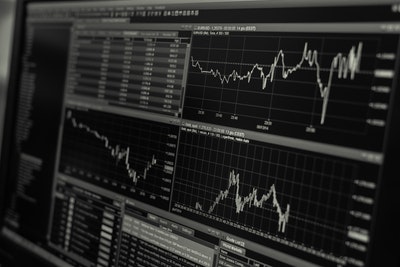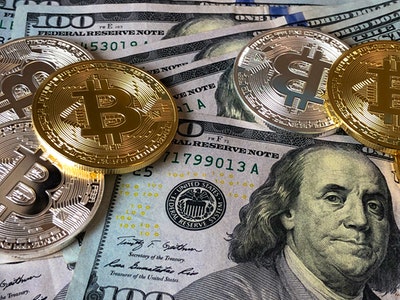FX vs Stock/Index Trading: Which is Better for Retail Traders?

FX market:
By Forex/currency (FX) trading, a trader essentially buys or sells a currency against another (base currency vs quote currency).
When a trader trades an FX pair as a CFD, such as USD/JPY, that involves buying the base currency (USD) against the quote currency (JPY) in the hope that the exchange rate of USD will appreciate against JPY If a trader feels that the base currency will gain against quote currency, he will take a buy/long position and if he thinks the base currency will weaken against the quote currency, he will take a sell/short position.
For example, a trader may open a buy deal on USD/JPY if recent announcements by the Fed (U.S. Central Bank) sound more hawkish than the BOJ (Japanese Central Bank).
But he may also open a sell position on USD/CAD at the same time if the BOC (Canadian Central Bank) sounds more hawkish than the Fed.
Stock/Index (EQ) market:
By stock/index trading as CFDs, a trader opens a Buy or Sell deal on a specific stock (like MSFT, Google, Tesla, Boeing, etc) or index (like DJ-30, NQ-100, or DAX-30) if he thinks the price will appreciate or depreciate in the next few hours/days due to some news and overall market condition (buy/long and sell/short position). In-stock/index trading, there is no such pairs concept like in currency (base/quote).
Underlying reasons behind price movement (FX/EQ):
- Both FX and EQ markets are moved by underlying macro-economic news including economic data, central bank policy actions/comments, domestic politics & policies, and also geo-politics.
- Higher monetary stimulus (like rate cuts, QE, etc) is generally negative for base currency but positive for equities (lower borrowing costs and higher liquidity).
- Higher fiscal stimulus (government grants and spending including that on infra) is generally positive for equities and also positive for base/domestic currency to some extent as it will eventually help the central bank to roll back monetary stimulus.
- In FX, say for USD pairs (as the base currency), USD generally appreciates against the quote currency if some vital economic data such as employment or inflation becomes hotter than market expectations, which can lead the Fed (Central Bank) to tighten.
- Although any monetary policy tightening (i.e. higher borrowing costs) will could be positive for a base currency (USD here), it’s negative for the overall stock market and thus a stock index like the Dow may fall along with underlying stocks in general.
- FX pairs (base/quote currency) also reflect real interest rates and yields of differential interest rate/10Y bond yield-CPI/inflation as well as purchasing power parity; consistently higher inflation generally reduces a currency’s purchasing power over a period.
- As USD is the global reserve currency, any unusual shortage of USD in the money/funding market may cause the USD to be stronger than other currencies, especially EM currencies (like we have seen during the March 2020 COVID lockdown 1.0).
- Any monetary stimulus like QE, rate cuts, YCC, etc. to fight any financial crisis (like 2008 GFC, 2020 COVID) by major/G4 Central Banks (Fed, ECB, BOE and BOJ) ensures higher supplies/availability of not only USD but also other reserve/globally important currencies like EUR, GBP and JPY. As generally, after any major financial crisis, all global/OECD central banks follow the Fed in rate cuts and QE (almost synchronized action), this can ensure the respective FX pair is stable.
Some other differences between FX and EQ markets:
- FX is the world’s largest financial market, at around $7T nominal volume per day.
- FX trading is ideal for intraday swing trading with less risk as prices normally gyrate within a predictable range, say 30-50 pips (day range).
- Generally, FX policies are controlled by the central bank and government, which does not take any knee-jerk decision nowadays; thus FX trading is can be more predictable than individual stock trading.
- EQ trading also involves intraday swing trading, but with bigger volatility (1/2-10% trading range daily/few days).
- Generally, the FX market is controlled by USD movement, followed by EUR, JPY, and GBP; i.e. major FX pairs are USD/JPY, EUR/USD, and GBP/USD
- The FX market is more liquid than the EQ market.
- Individual stocks often move (out/underperforming) the market for some stock-specific news (like earnings, guidance etc).
- Unlike in FX, there are various valuation metrics for stocks and indices; the most popular is PE multiples (core operating EPS*average PE).
- The stock market is a forward discounting machine/market (unlike FX market); usually, stock market discounts future earnings/cash flow estimates, not actual present earnings/cash-flows.
Co-relation between FX and EQ market:
- FX pairs involving EM currencies like USD/INR is are also affected to some extent by forex inflows/outflows; e.g. higher USD inflow into India (INR) is positive for INR as the demand of INR increases due to conversion of USD into INR (local currency); thus this will be negative for USD/INR to some extent.
- Also, the weaker local currency will cause higher imported inflation for an import-oriented economy like India, which imports more than 80% of its oil requirement; thus higher USD/INR; i.e. weaker INR may cause unusually higher inflation, which could be negative for the domestic economy and EQ market.
- The weaker local currency is positive for export-heavy companies and negative for domestic/import oriented companies in the EU market; e.g. FTSE-100 (U.K.), DAX-30 (Germany) export heavy indices, while FTSE-250 domestic savvy. Thus higher GBP/USD is generally negative for FTSE-100, but positive for FTSE-250 and vice-versa. Higher EUR/USD is negative for DAX-30 and vice-versa to some extent.
- EM stock market (Emerging Market) like India is also susceptible to Fed policies; lower policy rates, QE causes higher FPI (Foreign Portfolio Investment), FX (USD) inflow and higher EQ and vice-versa.
Bottom line:
Overall, currency (FX) shapes an economy and policies. From a trading perspective, both FX and EQ are important, having both advantages and disadvantages.
Disciplined FX trading may result in more sustainable regular income for small retail traders. FX trading is mainly influenced by Central bank policies/comments (jawboning) and vital economic data (like inflation, employment etc.), which is easier to track for small retail traders rather than individual stock news.
In any case, both FX and EQ trading as CFDs requires pro-level can be done using technical (signal generation) as well as fundamental analysis (underlying news) skills or any such reliable independent (3rd party) service from the CFD service provider/broker.





